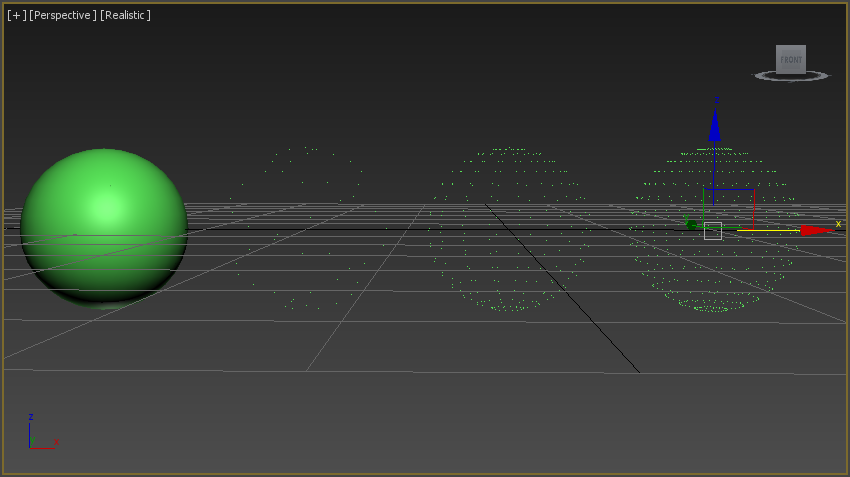3dsmax - Instancer
Maxwell recognizes Max instances as such, so their memory cost at render time is very low. However, using many Max instances in a scene can slow down the viewport, so they are not always a good choice for creating large numbers of objects such as debris or vegetation. Maxwell introduces its own instance node which is displayed in the viewport as a point cloud with adjustable level of detail, so that the performance impact in Max is much lower compared to the built-in instances. The following screenshot shows a Max sphere with 3 Maxwell instances at 10%, 50% and 100% detail:
To create a Maxwell instance you can either select a mesh and press the button on the Maxwell shelf, or go to Create->Geometry->Maxwell, create a new MxProxy node, press the Source object button and select the mesh that you want to be instanced. Note that you cannot instance groups, particle systems etc.; only polygons are currently supported. The node itself has only three controls.
- Display LOD: determines the percentage of the vertices in the original object which are used in the viewport representation of the instance.
- Instanced Mesh: the name of the object which is instanced.
- Delete: delete the association between this node and the instanced mesh.
If no material is applied on the instance, it will inherit the material setup of the original object, including per-face assignments, if they are present. A different material can also be applied explicitly on the instance like on any other object (right click -> assign material). It is not possible to apply multiple materials on an instance (per-face).

